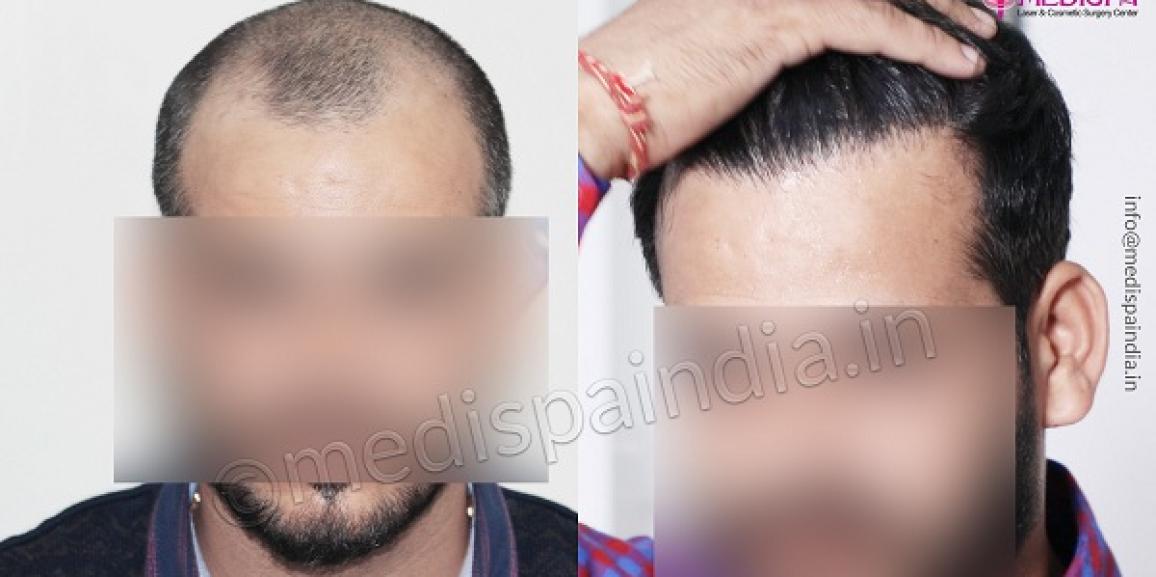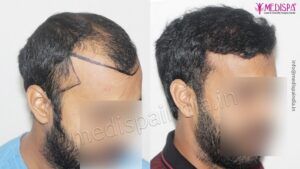
A minor procedure called as a hair transplant includes carefully selecting hair grafts from the donor region to be placed in the targeted bald area. When compared to other treatment options for the hair loss problem, hair transplant has emerged as the final and best answer.
Since many years ago, hair transplant in Jaipur has gained attention. Few of the best hair transplant doctors in the world are located in the city. Despite the outstanding treatments provided at a few clinics in the city, the hair transplant cost in Jaipur is extremely reasonable. A handful of the hair transplant doctors in Jaipur are highly regarded for offering the best hair transplants in the world, thus price is not the only factor driving hair transplant tourism to Jaipur.
The effectiveness of the hair transplant process depends on the capabilities offered by the clinic and the skills, experience, and knowledge of the surgeon. The aftercare you practice following the hair transplant treatments is another crucial factor that cannot be ignored for a successful hair transplant.
Hair transplantation
A minimally invasive surgical procedure known as a hair transplant involves harvesting hair grafts from the donor region and then transplanting them to the target bald area. The duration of the procedure might range from 4 to 9 hours, depending on the required hair density and the hair transplant technique. Hair transplantation is done using the FUE and FUT methods, each of which have unique harvesting procedures.
The Medispa hair transplant clinics in Delhi and Jaipur are the most well-liked hair transplant tourist attractions in the nation. We are recognised as the top providers of hair transplants and are known for exceeding clients’ expectations. If you want to look absolutely stunning following a hair transplant, the Medispa Hair Transplant Clinic is the finest place to go.
What is donor and recipient area?
The place from which the hair roots are removed is known as the donor area in a hair transplant. Through FUE or FUT hair transplantation, the hair is extracted.
The area where the hair roots are put into the slits is known as the recipient site in a hair transplant. Hair roots are implanted in holes or channels carved out in the recipient region.
Donor area and its selection
Given that the hair transplant process involves removing your natural hair, it is crucial that the donor regions have enough hair follicles to give enough coverage. The most important need for the procedure is that you have enough hair density in your donor locations to meet the requirements for eligibility.
The sides and back of the head are the most often used donor areas, followed by various body hairs other than scalp hairs. The donor location was selected on the grounds that only DHT resistant hair transplants are picked for harvesting because they lack androgenic hormone receptors.
These hair transplants are unaffected by androgenic hormones and continue to function as intended. This hair restoration procedure comes with a lifetime guarantee. This gives us reason to believe that hair transplantation leads in long-lasting, absolutely natural-looking effects.
These areas, often referred to as safe donor sites, should be carefully picked for hair graft harvesting since they have permanent hair roots.
Overharvesting and violation of safe donor area: what does it mean?
What is the scalp’s donor zone, please? Actually, the donor zone is the region, and more precisely, it is the region that contains the DHT-resistant or permanent hair roots. This area is significant because, if hair roots are removed from there, the effects will undoubtedly be permanent, which is the main benefit of a hair transplant.
Under the care of untrained surgeons, overharvesting is frequently attempted in an effort to provide a high density hair transplant or to make up for the greater damage to the hair grafts they inflict throughout the process. In both cases, the consequence is detrimental since the transplanted hair tends to fall out because the hair root won’t survive.
In order to harvest hair roots in a safe place, it is required to select the appropriate location. There is a danger that if your over-harvest the donor region, the density of the hair there may decrease and the area would appear sparse, which will result in another unsuccessful hair transplant.
The conclusion is that finding the appropriate hands for the process is essential if you want to get the finest results and preserve your hair follicles.
Taking care of donor area after hair transplant
We must have read a lot about caring for the transplanted region, but there isn’t much information accessible regarding how to care for the donor area after a hair transplant. After a hair transplant, the donor region has to be cleaned up.
After FUT hair transplantation, the donor region would be stitched up. It would take about 7 to 10 days for the recuperation. In order to prevent any kind of infection, you should refrain from perspiration and moisture at the donor location. Scarring that is hardly noticeable after healing will undoubtedly blend in with new hair growth.
Even though there won’t be stitches after a FUE hair transplant, the region still has to be maintained dry and free of moisture to prevent infection.
For the best results, the performing doctor and their staff will also offer some helpful advice for better donor area recovery.







